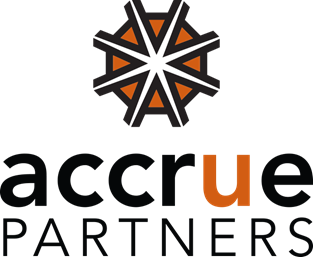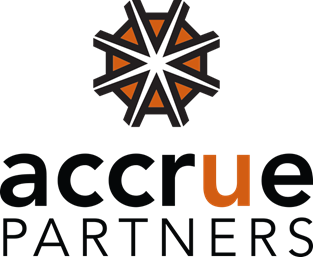
A career development plan is a roadmap for your employees on how they can navigate their careers with your company and develop the necessary skills to advance. Today’s professionals want their employers to support their career journeys. According to a July 2021 poll by Monster, 49% of workers expect their employers to play a part in their career growth. But 80% of employees don’t think their employers offer growth opportunities.
Career development plans can help you retain your top talent and attract better candidates to your workforce. Here’s why you should use them and how to create them for your employees.
First: What Is a Career Development Plan?
A career development plan is a plan in writing that lists an employee’s short- and long-term career goals while they’re working for your company. The plan includes steps for the employee to take to meet each goal, which might include:
- Training to complete
- Certifications/credentials to obtain
- Duties to successfully tackle
- Supervisors/trainers to work with and learn from
You and the employee should work on the career development plan together. That way, the employee can give input on the path they’d like to take and how they can apply their strengths at each step.
Strengths-based development results in a 9% to 15% increase in engaged employees and a 14% to 29% increased profit for companies, according to Gallup research. Encourage your employee to think about how to use their strengths along their journey.
Benefits of a Career Development Plan
There are many benefits of career development plans, both for employees and for you, the employer. These include:
- Career development creates a strong pipeline of talent. That can lead to more internal promotion and less costs for recruiting and hiring. Knowing exactly where your employees stand on their roadmaps, you can optimize how you grow your business and develop employees accordingly.
- Career development plans keep employees engaged. They have goals to focus on and steps to get there. A career development plan can instill confidence in workers who may have been unsure about their journeys.
- Career plans enable employers to focus on strengths-based development.
- Career development plans provide employees with actions to take to address weaknesses, through learning and training.
- Employee development plans enable your business to easily identify the talent that’s available and any talent gaps there are, which leads to more strategic hiring.
Now that you know what a career development plan is and why they’re beneficial to have, let’s look at the steps to creating them.
Steps to Create Career Development Plans
Ideally, you’ll want to create a career development plan with employees early on in their careers with your company. You can mention career development plans in recruiting and hiring processes, as well, to attract candidates and keep them engaged during the interview process.
While your HR department might spearhead a career development program, it’s important to get managers involved with the execution and monitoring of career development plans.
Managers account for up to 70% of variance in employee engagement. Having a manager facilitate career development with their team members shows employees their managers are invested in their development.
Use the following steps to create your plans.
1. Identify Company Goals
First, determine what the goals of the business are, so you’re able to match up employees’ talents and career goals with your business objectives. As you discuss strengths and career journeys with employees, you can plug your workers into a journey that aligns with your business growth plan.
2. Determine Learning & Development Capabilities
You may decide to assign a budget to employee career development plans, which includes covering costs for college classes, online learning, conferences, etc.
Employee career development strategy should include a plan for how employees will get the training, certifications, and credentials they need. Your business will need to decide whether you’ll support learning on the job or have employees learn on their own time.
Depending on what employees say they want to learn, you might discover commonalities that would benefit from bringing informal trainers or having someone on your team develop larger training sessions at your business. Have someone on your team manage learning and development requests, so you can optimize what you provide to employees.
3. See Where Employees Are
Before you create a career development plan with an employee, identify their current readiness, skills, and training. Employees may not be aware of how their current talent can lead to a specific type of role. Train managers so they’re able to provide helpful suggestions for career development based on the strengths of employees.
Once you establish short- and long-term goals for the employee, you might think about other workers who are suitable mentors or trainers for the employee to support them on their journey. Managers should also think about projects or teams they can assign an employee to based on their goals.
4. Map Out a Journey
Once you’ve identified where an employee is and where they want to go, write out the steps they need to take to get there. Identify how each step’s success will be measured and deadlines for each step.
A career development plan should include details for short-term career goals and objectives spanning 1 to 5 years. It can also include long-term career goals and objectives that can be updated along the way.
Make sure the journey is realistic, is achievable, and lines up with the employee’s talents and skillset. Career development plan steps will include:
- Positions to secure along the way
- Skills needed for each position
- Certifications and credentials required to obtain a new position
- Goals to achieve before moving on to a new position (the number of sales to close in a year for a salesperson who wants to reach management level, for example)
Once the plan is created, establish regular check-in times so a manager and the employee can evaluate progress and address accomplishments and roadblocks.
5. Make Plans Adaptable
Career development plans shouldn’t be set in stone. Your employees’ career goals may change over time, as they complete the steps to further points in the journey.
Always check in with employees about how they feel their progress is going and if they’d like to make any updates to their plans. Managers should communicate changes to whoever’s in charge of overall employee career development, so the program can identify new goals, evolving talent, and any gaps or hiring needs that should be planned for.
Create Career Development Plans to Increase Retention
Career development plans are a smart business strategy. If your business is new to having them, consult with your HR staff about what they’d recommend. Career development templates can be optimized based on industry, the size of your staff, and your business objectives.
As you implement career development plans, get input from managers and employees about how the plans are working to support employee engagement. Measure metrics like retention and employee satisfaction to determine the effectiveness of your program.
When employees do leave your company, gather feedback about their career development plan and any improvements they’d suggest for your program. In the recruiting process, you can highlight career development plans as a value-add for your business. Contact AccruePartners for insights on how to position your career development plan strategy during hiring.





